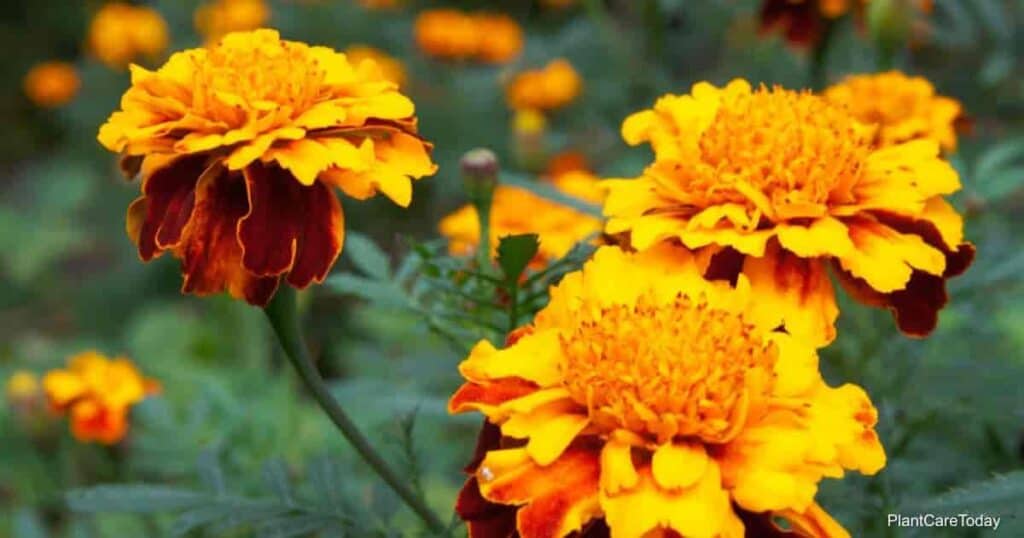Marigolds are one of those garden plants that have become so popular that even children can often identify one when it blooms.
Marigold flowers are not only wonderful to look at, they’re an important companion plant that can repel ants and other pests.

Heavy bloomers, a marigold may continue to display flowers throughout summer.
However, there’s a little trick to ensuring your marigolds have full, vibrant blooms for as long as possible called deadheading.
Deadheading is the process of removing spent or dead blossoms to help encourage new flower buds, and many plants benefit from this extra maintenance.
Read on to learn more about deadheading as well as how to use it to get the most out of your marigold’s blooming season.
How and When to Deadhead Marigolds
Regular Marigold deadheading is a simple process but one that you may not have heard of.
While not essential, proper deadheading will have a wonderful effect on your garden.
Should You Deadhead?
Deadheading is often a matter of personal preference, but it has its benefits when done right.
Imagine your plant is a builder with limited materials.
It can focus on improving the basement (roots), main structure (foliage and stems), or aesthetics (flowers).
When the marigold blooms, it’s pulling resources to provide all of that window dressing.
Dying flower heads are like damaged curtains or furniture – the plant can continue to expend resources trying to patch the damage or it can discard the damaged piece and replace it with a new one.
As marigolds are primarily grown as annuals, they often have fewer resources to pass around and may bloom once or multiple times during the growing season, depending on the amount of those resources.
When deadheading, you’re helping the plant make this decision by removing the damaged item so the plant can replace it with a new one.
As a result, another marigold flower stem will continue to appear, fresh and vibrant, throughout the season.
Of course, you can also choose to skip deadheading without harming the plant.
This just means that the plant will be providing resources to the dying blooms until they fall off naturally, thus reducing the number of fresh blooms that appear.
However, this does provide the advantage of allowing the plant to self-seed so you won’t have to manually plant more the following year.
When to Deadhead
Deadheading isn’t a one-and-done job, but an ongoing process that lasts as long as the plant is in bloom.
Begin when you see the first flower begin to fade and keep at it until the plant is no longer producing new blooms.
As each flower may start fading at a different rate, daily checks will result in more efficient deadheading.
While it’s often common practice to deadhead a flower as soon as it begins to fade or get a brownish tinge, you can also choose to leave it until it starts wilting with similar results.
In the end, it’s all a matter of personal preference as to when or how often you deadhead.
How to Deadhead a Marigold
There are two ways to deadhead your marigolds, although we don’t recommend simply playing a lot of Jerry Garcia if you want the best possible results.
Instead, a more practical option is to grab some sharp, sterile hand pruners or scissors.
Note that you may also choose to prune by pinching instead of cutting, but this may be a little messier looking afterward.
You’ll want to focus on any flower which has begun turning brown, a sure sign that it’s reaching the end of its life.
Make your cut (or pinch and tear) right below the browning bloom, being sure to get any pods that have begun to form.
Even if you’ve pinched off the flower, the plant will immediately redistribute resources to create new blooms.
As a result, existing blooms will become more vibrant, and new, fresh blooms will appear.
